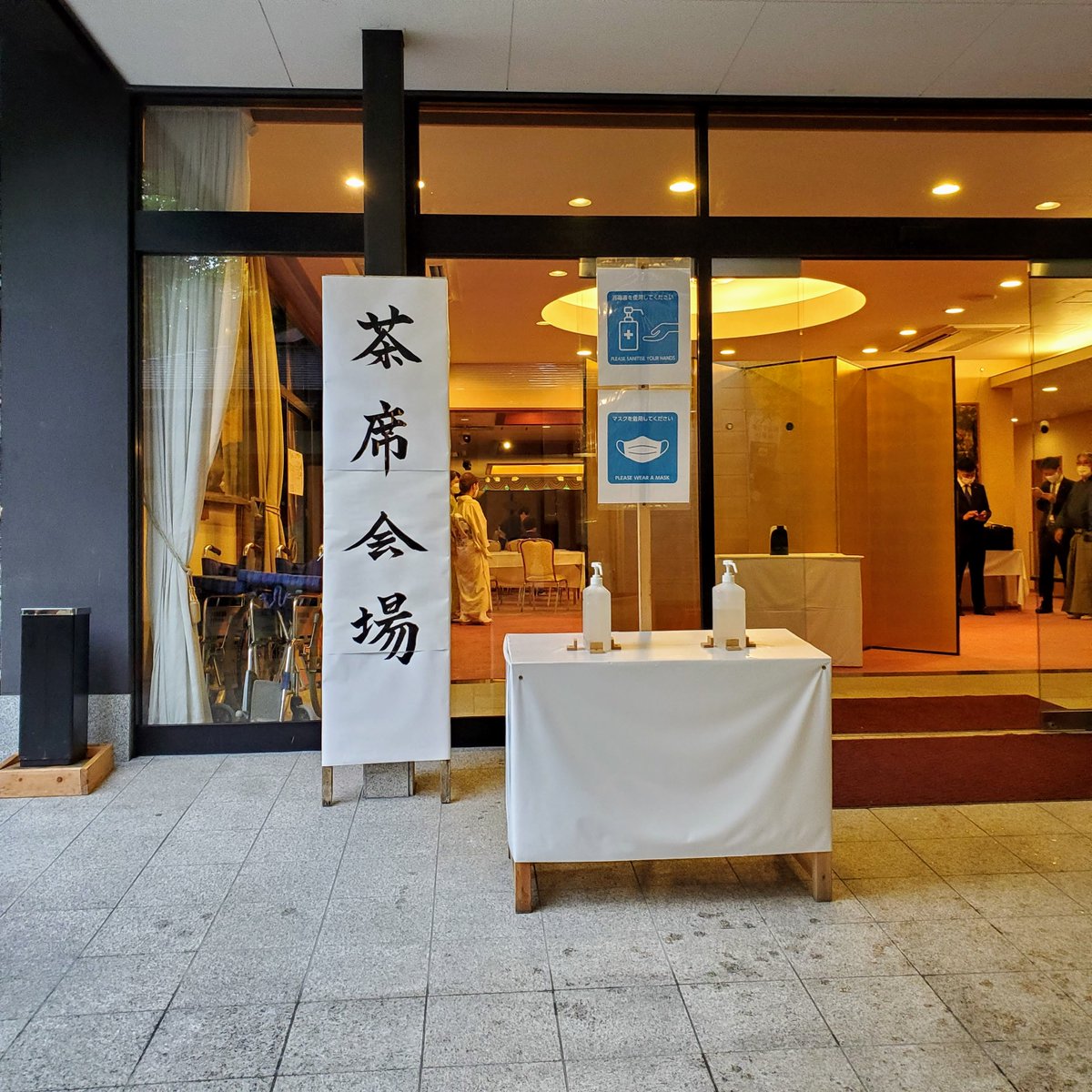🍵HUNTING FIREFLIES✨
Each year Shimogamo-jinja (下鴨神社) holds a special tea gathering called 'Hotarubi-no-Chakai' (蛍火の茶会). Over 600 fireflies are released beside the Mitarashi-gawa (御手洗川) as evening falls, bringing an otherworldly feel to the tea ceremony.
#Japan



Each year Shimogamo-jinja (下鴨神社) holds a special tea gathering called 'Hotarubi-no-Chakai' (蛍火の茶会). Over 600 fireflies are released beside the Mitarashi-gawa (御手洗川) as evening falls, bringing an otherworldly feel to the tea ceremony.
#Japan




What better way to celebrate firefly season than with Kameya Yoshinaga's (亀屋良長) cooling 'hotaru-no-yoru' (蛍の夜 'evening fireflies').
The sweet is a type of 'kingyoku' (錦玉), a jelly made from boiling agar and sugar...particularly popular in summer.
➡️@YuikoYoshimura
#京都



The sweet is a type of 'kingyoku' (錦玉), a jelly made from boiling agar and sugar...particularly popular in summer.
➡️@YuikoYoshimura
#京都




In the traditional calendar June 11th-15th is known as 'kusaretaru kusa hotaru to naru' (腐草為螢), 'rotten grass becomes fireflies'. There was a belief, imported from the mainland, that fireflies were born from grass decaying in the humid early summer heat.
#Japan #fireflies



#Japan #fireflies




The proverb "fusō ka shite hotaru to naru" (腐草化して蛍となる) also comes from this old belief. It can be translated as "the impossible happens".
#Japan #京都 #Kyoto #蛍 #fireflies #proverb #graveofthefireflies #火垂るの墓
#Japan #京都 #Kyoto #蛍 #fireflies #proverb #graveofthefireflies #火垂るの墓
Wakuden Sakaimachi's (和久傳堺町店) beautiful, dark green 'sasahotaru' (笹ほたる 'fireflies in the bamboo grass').
The sweet is a matcha flavoured mizu yōkan (水羊羹), a refreshing snack for a humid evening of firefly hunting.
➡️wakuden.kyoto/store/sakaimac…
➡️wakuden.kyoto/store/sakaimac…



The sweet is a matcha flavoured mizu yōkan (水羊羹), a refreshing snack for a humid evening of firefly hunting.
➡️wakuden.kyoto/store/sakaimac…
➡️wakuden.kyoto/store/sakaimac…




Tea amongst the fireflies was an old tradition at Shimogamo-jinja that disappeared at the end of the 19thC. Revived in 1991, the event has been scaled back during the pandemic.
Although the tea ceremony returned after a 3 year absence, attendance was determined by lottery.
#Kyoto



Although the tea ceremony returned after a 3 year absence, attendance was determined by lottery.
#Kyoto




'Hotarubi-no-Chakai' is more than just tea. It's also an opportunity to watch a performance of 'gagaku' (雅楽), classical music once commonly performed at the imperial court.
The dancer was dressed in a traditional 12-layered kimono called a 'jūnihitoe' (十二単).
#雅楽 #十二単
The dancer was dressed in a traditional 12-layered kimono called a 'jūnihitoe' (十二単).
#雅楽 #十二単
The 'jūnihitoe' (十二単 lit. 'twelve layers') was a formal kimono first worn by aristocratic women at court in the Heian period.
Silk, kimono-like robes of different shades are placed one upon the other, creating a layered effect in which the colours beneath can be glimpsed.



Silk, kimono-like robes of different shades are placed one upon the other, creating a layered effect in which the colours beneath can be glimpsed.




hazy night-
people listening
to heavenly music
朧夜や天の音楽聞し人
-Kobayashi Issa (小林一茶), 1819
Developed as court music of the Heian-kyū (平安宮 the 'Heian Palace'), 'gagaku' (雅楽) has changed little since it first emerged in the 10thC.
#gagaku #雅楽 #Kyoto #Japan #京都
people listening
to heavenly music
朧夜や天の音楽聞し人
-Kobayashi Issa (小林一茶), 1819
Developed as court music of the Heian-kyū (平安宮 the 'Heian Palace'), 'gagaku' (雅楽) has changed little since it first emerged in the 10thC.
#gagaku #雅楽 #Kyoto #Japan #京都
Oimatsu (老松) set up a temporary store on the approach to Shimogamo-jinja, selling limited edition confections.
'Sawabe-no-hotaru' (沢辺の蛍) depicts a firefly hovering beside swampland.
#wagashi #和菓子 #Kyoto #京都 #老松 #下鴨神社 #Japan #firefly #蛍



'Sawabe-no-hotaru' (沢辺の蛍) depicts a firefly hovering beside swampland.
#wagashi #和菓子 #Kyoto #京都 #老松 #下鴨神社 #Japan #firefly #蛍




On the 1st of each month Tawaraya Yoshitomi's Karasuma store (俵屋吉富) sells a limited edition box of sweets based on the traditional calendar (二十四節気).
June's box was inspired by 'bōshu' (芒種 'grain beards and seeds 6/6-20) & 'geshi' (夏至 'summer solstice' 6/21-7/6).



June's box was inspired by 'bōshu' (芒種 'grain beards and seeds 6/6-20) & 'geshi' (夏至 'summer solstice' 6/21-7/6).




🍀Sticking with the firefly theme, one of the stand out sweets from June's box is 'kusa-botaru' (草蛍 'fireflies in the grass').
💍'nagoshi-no-harae' (夏越の祓 'summer purification rites').
💜'ayame hanasaku' (菖蒲華 'blooming iris').
💠'ajisai' (あじさい 'hydrangea').
#和菓子



💍'nagoshi-no-harae' (夏越の祓 'summer purification rites').
💜'ayame hanasaku' (菖蒲華 'blooming iris').
💠'ajisai' (あじさい 'hydrangea').
#和菓子




Nao-san stops by Tatsumi Bridge (巽橋) in Gion Shirakawa (祇園白川) to see the fireflies. Although they are difficult to make out in the photo, there were a few flitting over the waters.
@itotatsu's sweet firefly inspiration is 'sode-hikaru' (袖光る 'shining sleeves').
#和菓子



@itotatsu's sweet firefly inspiration is 'sode-hikaru' (袖光る 'shining sleeves').
#和菓子




• • •
Missing some Tweet in this thread? You can try to
force a refresh





































































